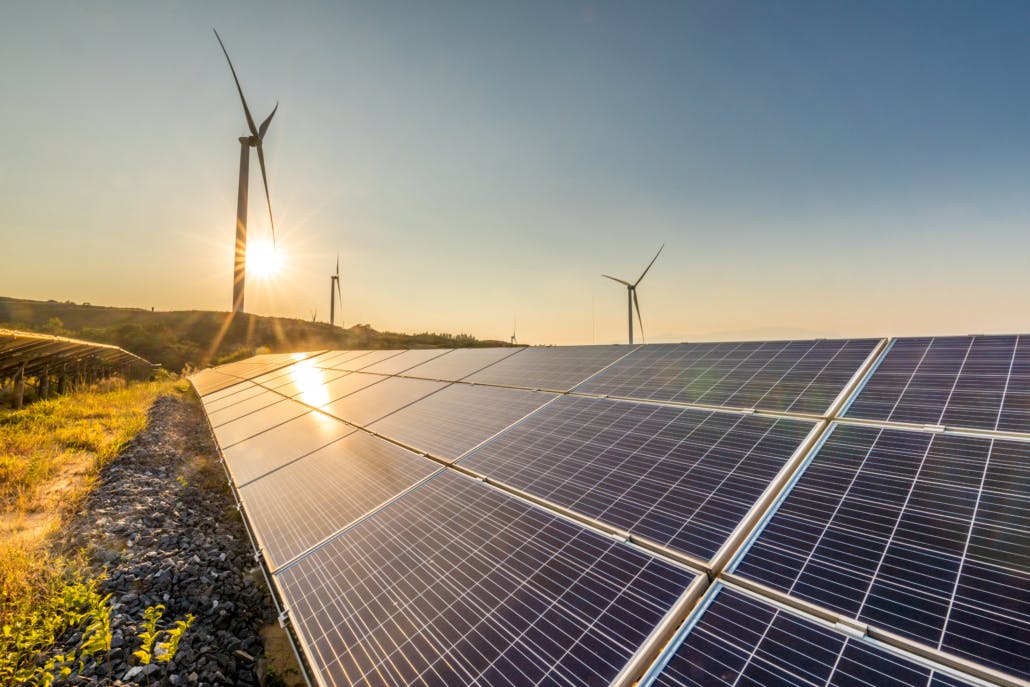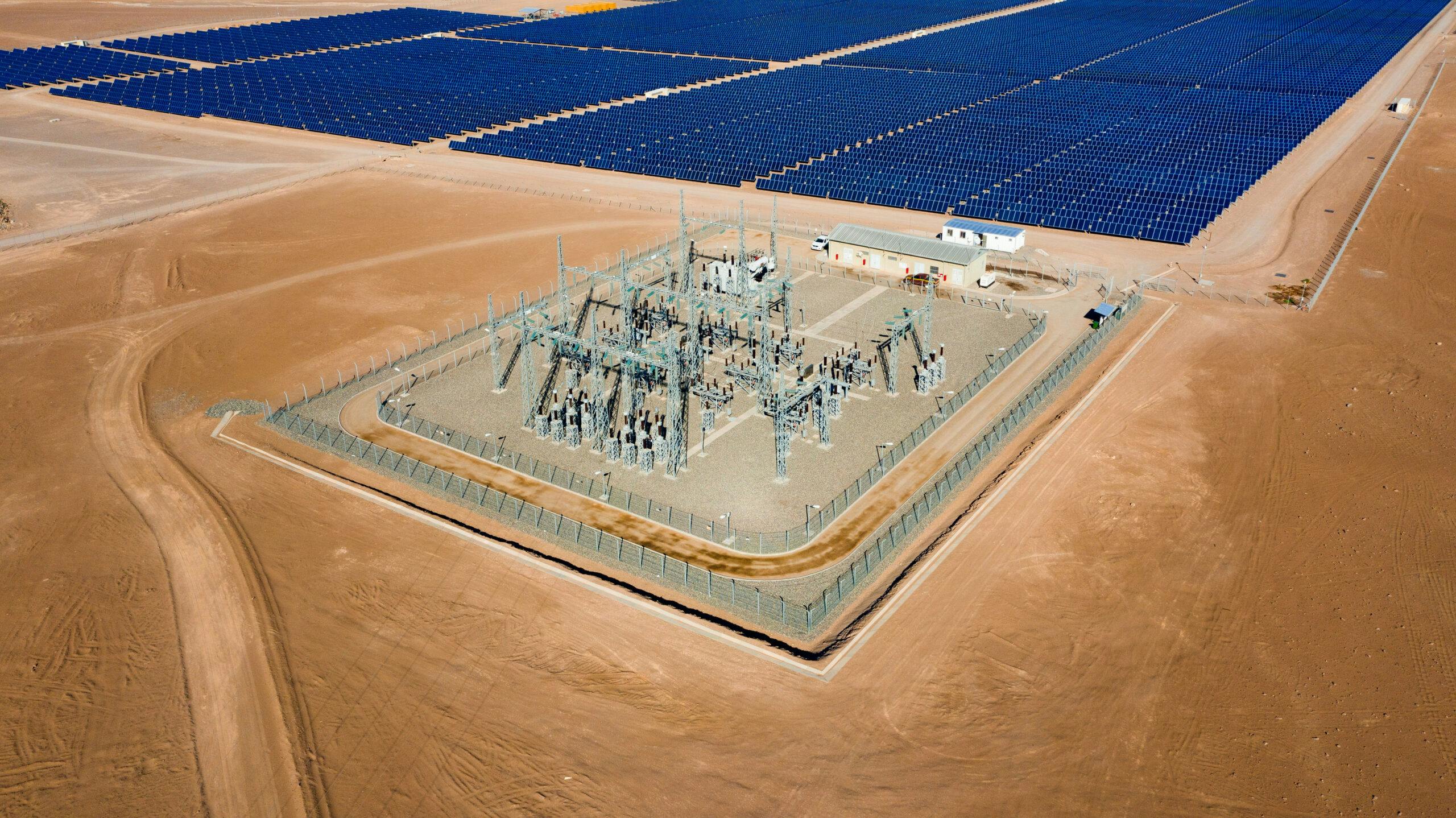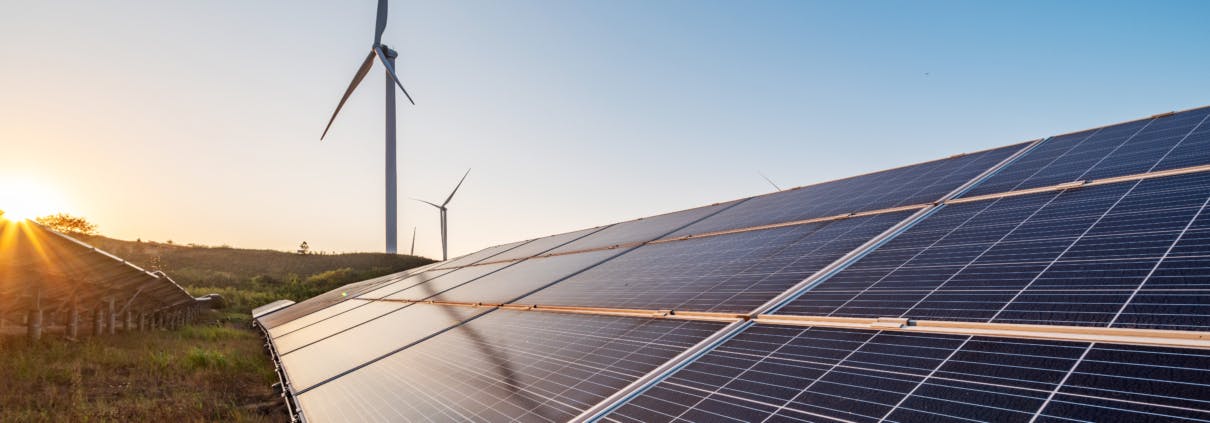TOWARDS NET-ZERO INDUSTRIAL HUBS: THE ROLE OF RENEWABLE ENERGY

In the wake of the 2021 United Nations Climate Change Conference (COP26), held in November, countries have come forward with ambitious 2030 emissions reduction targets that align with reaching net zero by the middle of the century.
To deliver on these commitments, large corporate energy users will play a key role. Today, a growing movement toward net-zero industrial hubs provides a unique opportunity for corporations around the world to align themselves with the Paris Agreement goals – as well as increase the adoption of renewable energy.
From the aerospace cluster in Queretaro, Mexico to the automotive cluster in Detroit, Michigan, companies have been co-locating in dynamic ecosystems for decades. Sharing resources, problems, and solutions, industrial parks act as economic growth engines while boosting opportunities for increased efficiencies.
Now, as the fight against climate change becomes more urgent, these co-located industrial parks can be leveraged in a new way: to cut emissions down to zero.
How do net-zero industrial clusters work?
The energy and industrial sectors are responsible for as much as two-thirds of the world’s CO2 (around 22 gigatons per annum), according to a new report by Accenture in collaboration with the World Economic Forum.
If companies located within clusters can work together to make the most of new clean technologies and processes, and at the same time maintain or increase productivity, increase the green credentials of their products, and enhance the environment, they can become part of the solution – instead of part of the problem.
What this looks like in practice varies dramatically, depending on the region and type of industry.
At their heart, though, net-zero industrial clusters are a set of facilities, plants, and linked infrastructure dedicated to the reduction and elimination of greenhouse gases through the application of clean energy and emissions control technology.
Through on-site renewables generation, shared dispatchable zero-carbon sources, storage, and microgrids, industrial clusters can tap into the opportunities presented by clean energy to not only reduce emissions but also enable companies located at the sites to meet their own internal sustainability targets. And because of the cluster set-up, if energy demand cannot feasibly be supplied by on-site renewables, companies can pool demand for renewable power purchase agreements (PPAs) instead.
Net-zero industrial clusters today
Net-zero industrial clusters are still a relatively new concept, but one which is gaining ground as cities and nations seek to reach net-zero carbon by 2050 or sooner, at the lowest possible cost to their citizens and businesses.
One such example is the Suzhou Industrial Park. Situated in Jiangsu, China, it is one of the largest and most modern industrial parks in the world. Spread over an area of 288 km2 and home to over 4,000 businesses, the industrial park offers a range of cost-effective, low carbon, and net-zero energy and infrastructure solutions that allow companies located there to track and improve their energy efficiency and emissions in line with their own sustainability goals.
Meanwhile, in the UK, where the government has made a commitment to deliver four low-carbon clusters by 2030 and at least one fully net-zero cluster by 2040, there are numerous promising examples.
One is the Humber industrial cluster, in Yorkshire. Home to industries such as refining, petrochemicals, and manufacturing, this is the country’s most carbon-intensive industrial cluster in the country, emitting 12.4 million tons a year. The plan is to create a shared carbon capture and storage infrastructure alongside the world’s first negative emissions power station, which will enable industries in the region to produce low carbon chemicals. There is also the potential to incorporate green hydrogen production, making use of increasing supplies of renewable energy from offshore wind in the Humber region.
As these projects begin to mature, interest is growing in the US and Latin America, too, with a recent study by the Center for Global Energy Policy at Columbia University identifying opportunities for net-zero hubs in Houston.
Putting it into practice
While net-zero industrial clusters are a great idea in theory, in practice they’re less simple to implement. Most businesses, cities, and states don’t have the ability to start a net-zero transformation from a clean slate, and retrofitting legacy systems for energy efficiency and net-zero carbon involves significant costs. What’s more, not all large carbon emitters are located in clusters, so creating net-zero industrial parks only goes part of the way toward solving the issues.
However, we believe that the net-zero industrial cluster movement presents an exciting opportunity to facilitate and promote the adoption of renewable energy, as companies work hard to meet their climate goals. And for those companies that don’t yet have the opportunity to join a cluster, alternatives are already available.
One of the most effective alternatives for companies seeking to meet emissions reduction objectives is Renewable Energy Certificates (RECs). Around the world, approximately 70% of companies with net-zero targets already utilize RECs as part of their renewable electricity procurement strategies. The use of RECs enables a company to state that it uses renewable electricity from a low or zero-emissions source, and because they provide flexibility in sourcing green power from anywhere in a given country, even companies located in regions without abundant renewable energy resources can benefit.
Another option is through PPAs, which allow corporate consumers to purchase a certain amount of renewable energy from a specific asset under a predetermined pricing arrangement. Approximately 45% of companies with net-zero targets sign these agreements as part of their renewable electricity procurement strategies, and their use is growing as more and more companies seek to tap into the benefits of renewable electricity to achieve their sustainability goals.
However, RECs and PPAs alone will not get companies to carbon neutrality. Daily operations like water use, packaging production, and the use of non-electric equipment all have a carbon footprint, which is why net-zero industrial clusters are so compelling: through shared infrastructure and carbon capture technology, they enable new business models that can contribute to preventing the worst effects of man-made climate change.
For the time being, however, until net-zero industrial clusters become a widespread global reality, the next best thing for large emitters is to take a serious look at their energy use strategies and consider implementing PPAs, RECs, and other tools to set their course for the path to net-zero.
In partnership with Castleberry Media, we are committed to taking care of our planet, therefore, this content is responsible with the environment.
Share This Entry


